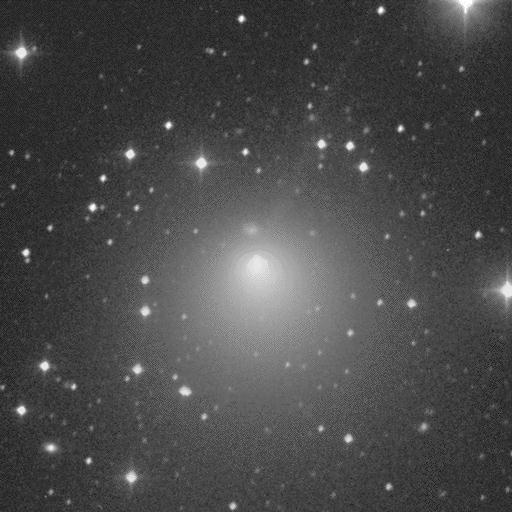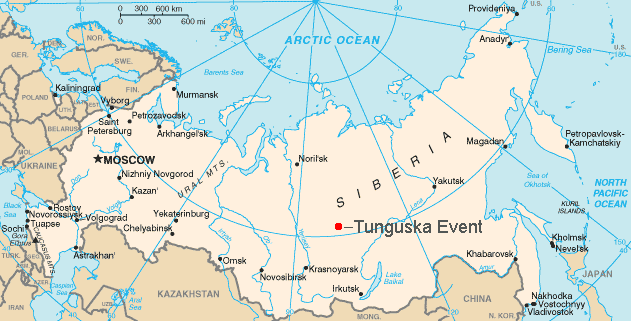|
Ľubor Kresák
Ä˝ubor Kresák (23 August 1927 in Topoľčany – 20 January 1994 in Bratislava) was a Slovak astronomer. He discovered two comets: the periodic comet 41P/Tuttle-Giacobini-Kresak and the non-periodic C/1954 M2 (Kresak-Peltier). He also suggested in 1978 that the Tunguska event was a fragment of the periodic comet Encke. The asteroid 1849 Kresák was named in his honor. His wife Margita Kresáková was also an astronomer. References External links Publications by Ä˝. Kresákin Astrophysics Data System The SAO/NASA Astrophysics Data System (ADS) is an online database of over 16 million astronomy and physics papers from both peer reviewed and non-peer reviewed sources. Abstracts are available free online for almost all articles, and full scanned a ... 1927 births 1994 deaths Czechoslovak astronomers People from Topoľčany {{Europe-astronomer-stub ... [...More Info...] [...Related Items...] OR: [Wikipedia] [Google] [Baidu] |
Topoľčany
Topoľčany (; sk, Veľké Topoľčany before 1920; hu, Nagytapolcsány) is a town in the Nitra Region of Slovakia. The population is around 25,000 in total. The town's population is nicknamed ''Žochári'' (singl. ''Žochár'') (producers, or owners of "mosses"). The Nitra River flows through a wide valley between the two mountain ranges that are visible from the town: Tribeč (to the east) and Považský Inovec (to the west). Name The name Topoľčany was assumed to be derived from sk, topoľ ( poplar tree).Martin Štefánik - Ján Lukačka et al. 2010, Lexikón stredovekých miest na Slovensku, Historický ústav SAV, Bratislava, 2010, pp. 503, 360, . http://forumhistoriae.sk/-/lexikon-stredovekych-miest-na-slovensku Groves of these trees were once abundant on the banks of the Nitra River, thus the local settlers get the name ''*Topoľčane'' - "those who live between poplars". History Founded in the 9th century, Topoľčany was a regional market centre during the Middle Ag ... [...More Info...] [...Related Items...] OR: [Wikipedia] [Google] [Baidu] |
Comet Encke
Comet Encke , or Encke's Comet (official designation: 2P/Encke), is a periodic comet that completes an orbit of the Sun once every 3.3 years. (This is the shortest period of a reasonably bright comet; the faint main-belt comet 311P/PanSTARRS has a period of 3.2 years.) Encke was first recorded by Pierre MĂ©chain on 17 January 1786, but it was not recognized as a periodic comet until 1819 when its orbit was computed by Johann Franz Encke. Like Halley's Comet, it is unusual in its being named after the calculator of its orbit rather than its discoverer. Like most comets, it has a very low albedo, reflecting only 4.6% of the light its comet nucleus, nucleus receives, although comets generate a large coma (cometary), coma and tail that can make them much more visible during their perihelion (closest approach to the Sun). The diameter of the nucleus of Encke's Comet is 4.8 km. Discovery As its official designation implies, Encke's Comet was the first periodic comet discovered af ... [...More Info...] [...Related Items...] OR: [Wikipedia] [Google] [Baidu] |
1994 Deaths
File:1994 Events Collage.png, From left, clockwise: The 1994 Winter Olympics are held in Lillehammer, Norway; The Kaiser Permanente building after the 1994 Northridge earthquake; A model of the MS Estonia, which sank in the Baltic Sea; Nelson Mandela casts his vote in the 1994 South African general election, in which he was elected South Africa's first president, and which effectively brought Apartheid to an end; NAFTA, which was signed in 1992, comes into effect in Canada, the United States, and Mexico; The first passenger rail service to utilize the newly-opened Channel tunnel; The 1994 FIFA World Cup is held in the United States; Skulls from the Rwandan genocide, in which over half a million Tutsi people were massacred by Hutus., 300x300px, thumb rect 0 0 200 200 1994 Winter Olympics rect 200 0 400 200 Northridge earthquake rect 400 0 600 200 Sinking of the MS Estonia rect 0 200 300 400 Rwandan genocide rect 300 200 600 400 Nelson Mandela rect 0 400 200 600 1994 FIFA ... [...More Info...] [...Related Items...] OR: [Wikipedia] [Google] [Baidu] |
1927 Births
Nineteen or 19 may refer to: * 19 (number), the natural number following 18 and preceding 20 * one of the years 19 BC, AD 19, 1919, 2019 Films * ''19'' (film), a 2001 Japanese film * ''Nineteen'' (film), a 1987 science fiction film Music * 19 (band), a Japanese pop music duo Albums * ''19'' (Adele album), 2008 * ''19'', a 2003 album by Alsou * ''19'', a 2006 album by Evan Yo * ''19'', a 2018 album by MHD * ''19'', one half of the double album ''63/19'' by Kool A.D. * ''Number Nineteen'', a 1971 album by American jazz pianist Mal Waldron * ''XIX'' (EP), a 2019 EP by 1the9 Songs * "19" (song), a 1985 song by British musician Paul Hardcastle. * "Nineteen", a song by Bad4Good from the 1992 album '' Refugee'' * "Nineteen", a song by Karma to Burn from the 2001 album ''Almost Heathen''. * "Nineteen" (song), a 2007 song by American singer Billy Ray Cyrus. * "Nineteen", a song by Tegan and Sara from the 2007 album '' The Con''. * "XIX" (song), a 2014 song by Slipk ... [...More Info...] [...Related Items...] OR: [Wikipedia] [Google] [Baidu] |
Astrophysics Data System
The SAO/NASA Astrophysics Data System (ADS) is an online database of over 16 million astronomy and physics papers from both peer reviewed and non-peer reviewed sources. Abstracts are available free online for almost all articles, and full scanned articles are available in Graphics Interchange Format (GIF) and Portable Document Format (PDF) for older articles. It was developed by the National Aeronautics and Space Administration (NASA), and is managed by the Smithsonian Astrophysical Observatory. ADS is a powerful research tool and has had a significant impact on the efficiency of astronomical research since it was launched in 1992. Literature searches that previously would have taken days or weeks can now be carried out in seconds via the ADS search engine, which is custom-built for astronomical needs. Studies have found that the benefit to astronomy of the ADS is equivalent to several hundred million US dollars annually, and the system is estimated to have tripled the readership ... [...More Info...] [...Related Items...] OR: [Wikipedia] [Google] [Baidu] |
Margita Kresáková
Margita Kresáková (; 21 May 1927 – 1994) was a Slovak astronomer. She discovered comet C/1954 O1 on 28 July 1954, becoming just the second woman to discover a comet at the Skalnaté pleso Observatory. She married Slovak astronomer Ľubor Kresák in 1954 and they had one daughter. Kresáková was a member of the International Astronomical Union. She wrote a 1966 paper on meteor stream activity. The minor planet According to the International Astronomical Union (IAU), a minor planet is an astronomical object in direct orbit around the Sun that is exclusively classified as neither a planet nor a comet. Before 2006, the IAU officially used the term ''minor ... 9821 Gitakresáková is named after her. References 1927 births 1994 deaths People from Brezno District Czechoslovak astronomers Discoverers of comets {{Europe-astronomer-stub ... [...More Info...] [...Related Items...] OR: [Wikipedia] [Google] [Baidu] |
1849 Kresák
1849 Kresák ( ''prov. designation'': ) is a carbonaceous Eos asteroid from the outer region of the asteroid belt, approximately 24 kilometers in diameter. It was discovered by German astronomer Karl Reinmuth at Heidelberg Observatory in the middle of World War II on 14 January 1942. The asteroid was later named after Slovak astronomer Ľubor Kresák. Orbit and classification ''Kresák'' is a member of the Eos family (), the largest asteroid family in the outer main belt consisting of nearly 10,000 asteroids. It orbits the Sun in the outer main-belt at a distance of 3.0–3.1 AU once every 5 years and 4 months (1,950 days). Its orbit has an eccentricity of 0.02 and an inclination of 11 ° with respect to the ecliptic. The body's observation arc begins 6 days after its official discovery observation. Naming This minor planet was named in honor of Slovak astronomer Ľubor Kresák (1927–1994) from the Slovak Academy of Sciences in Bratislava and president of IAU's Co ... [...More Info...] [...Related Items...] OR: [Wikipedia] [Google] [Baidu] |
Asteroid
An asteroid is a minor planet of the inner Solar System. Sizes and shapes of asteroids vary significantly, ranging from 1-meter rocks to a dwarf planet almost 1000 km in diameter; they are rocky, metallic or icy bodies with no atmosphere. Of the roughly one million known asteroids the greatest number are located between the orbits of Mars and Jupiter, approximately 2 to 4 AU from the Sun, in the main asteroid belt. Asteroids are generally classified to be of three types: C-type, M-type, and S-type. These were named after and are generally identified with carbonaceous, metallic, and silicaceous compositions, respectively. The size of asteroids varies greatly; the largest, Ceres, is almost across and qualifies as a dwarf planet. The total mass of all the asteroids combined is only 3% that of Earth's Moon. The majority of main belt asteroids follow slightly elliptical, stable orbits, revolving in the same direction as the Earth and taking from three to six years to comple ... [...More Info...] [...Related Items...] OR: [Wikipedia] [Google] [Baidu] |
Tunguska Event
The Tunguska event (occasionally also called the Tunguska incident) was an approximately 12-megaton explosion that occurred near the Podkamennaya Tunguska River in Yeniseysk Governorate (now Krasnoyarsk Krai), Russia, on the morning of June 30, 1908. The explosion over the sparsely populated Eastern Siberian Taiga flattened an estimated 80 million trees over an area of of forest, and eyewitness reports suggest that at least three people may have died in the event. The explosion is generally attributed to a meteor air burst: the atmospheric explosion of a stony asteroid about in size. The supposed asteroid approached from the east-southeast, and likely with a relatively high speed of about (~ Ma 80). It is classified as an impact event, even though no impact crater has been found; the object is thought to have disintegrated at an altitude of rather than having hit the surface of the Earth. The Tunguska event is the largest impact event on Earth in recorded history, thou ... [...More Info...] [...Related Items...] OR: [Wikipedia] [Google] [Baidu] |
Bratislava
Bratislava (, also ; ; german: Preßburg/Pressburg ; hu, Pozsony) is the Capital city, capital and largest city of Slovakia. Officially, the population of the city is about 475,000; however, it is estimated to be more than 660,000 — approximately 140% of the official figures. Bratislava is in southwestern Slovakia at the foot of the Little Carpathians, occupying both banks of the River Danube and the left bank of the Morava (river), River Morava. Bordering Austria and Hungary, it is the only national capital that borders two sovereign states. The city's history has been influenced by people of many nations and religions, including Austrians, Bulgarians, Croats, Czechs, Germans, Hungarian people, Hungarians, Jews, Romani people, Romani, Serbs and Slovaks. It was the coronation site and legislative center and capital of the Kingdom of Hungary from 1536 to 1783; eleven King of Hungary, Hungarian kings and eight queens were crowned in St Martin's Cathedral, Bratislava, St Martin' ... [...More Info...] [...Related Items...] OR: [Wikipedia] [Google] [Baidu] |




